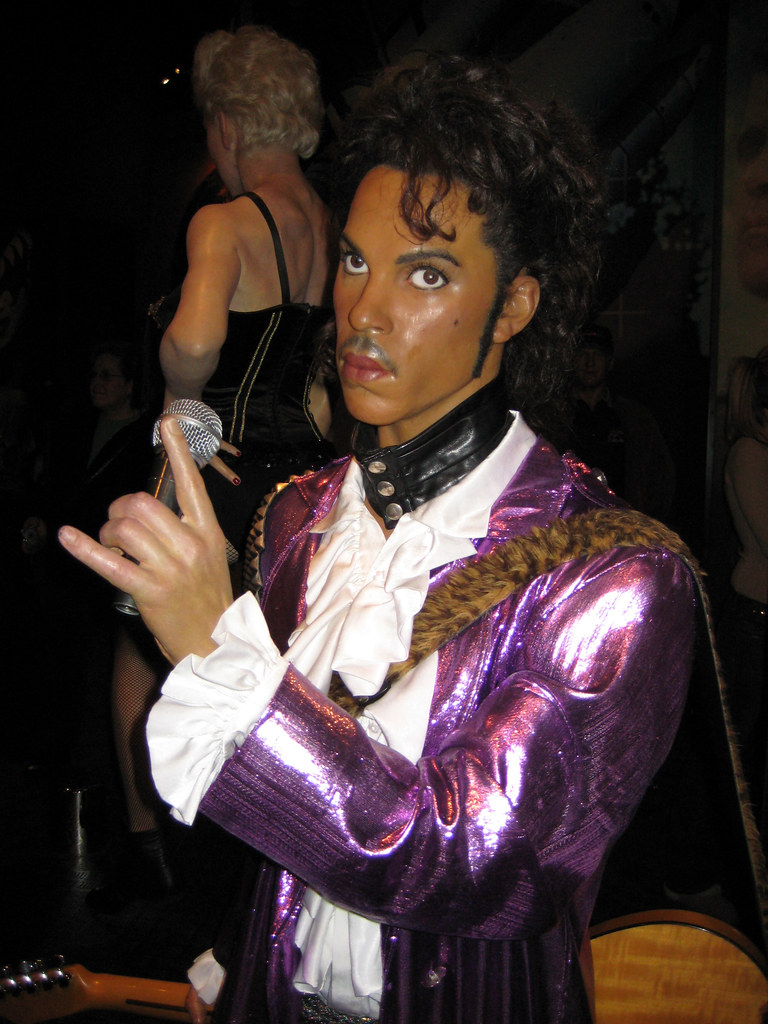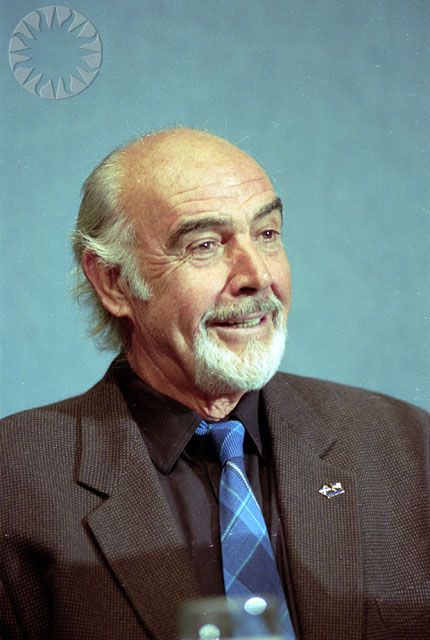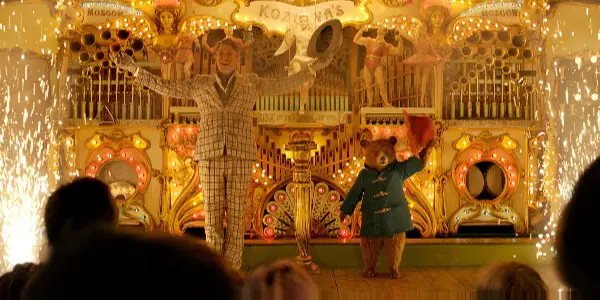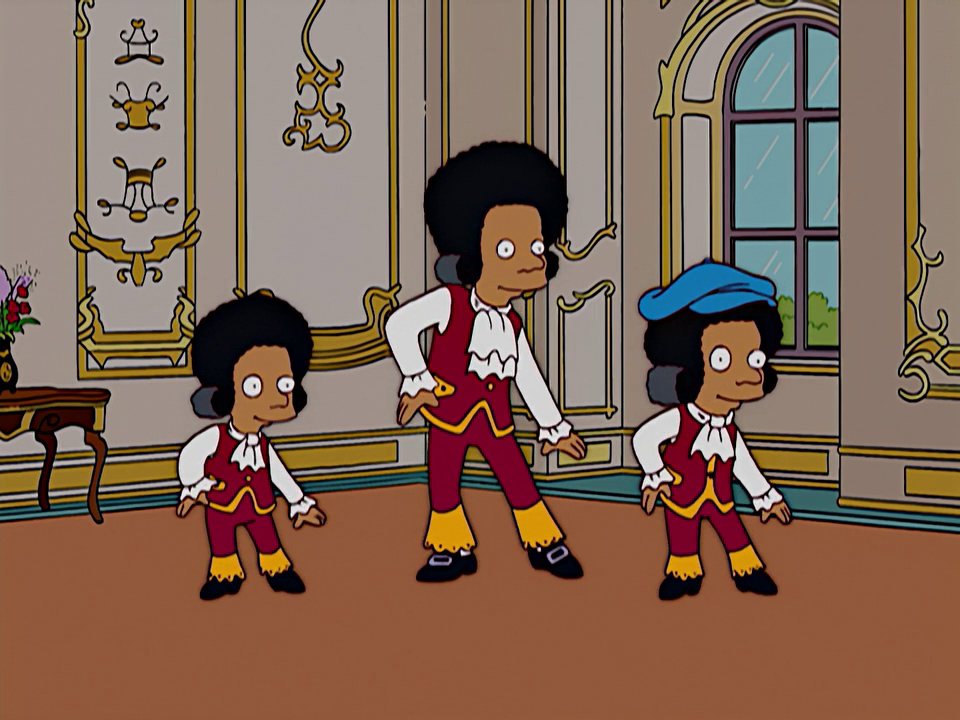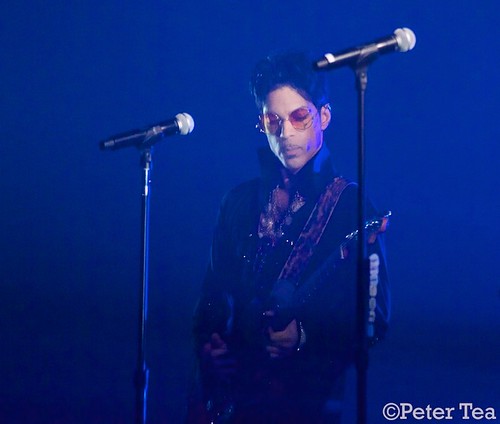
In the annals of music history, few figures shine as brightly, or as uniquely, as Prince Rogers Nelson. A true visionary, he carved an indelible path through genres, shattered conventions, and consistently redefined what it meant to be a superstar. His story is not just a chronicle of hits and awards, but a deeply personal narrative of an artist’s relentless pursuit of self-expression, a profound dedication to his craft, and an enduring partnership with the very essence of music itself.
From his flamboyant, androgynous persona to a vocal range that soared with far-reaching falsettos and high-pitched screams, Prince was a force of nature. He was a multi-instrumentalist who often preferred to play all or most of the instruments on his recordings, blending funk, disco, R&B, rock, new wave, soul, synth-pop, pop, jazz, blues, and hip hop into a sound uniquely his own—the pioneering ‘Minneapolis sound.’ His journey is a testament to the power of artistic conviction, a story that resonates with anyone who understands the deep connection between an artist and their art.
Join us as we take an in-depth look at the formative years and breakthrough moments of this singular talent, exploring the pivotal albums, groundbreaking tours, and significant turning points that shaped Prince into the legend we remember. It’s a journey filled with daring creativity, commercial triumphs, and the unwavering spirit of an artist who always stayed true to his vision, no matter the cost.
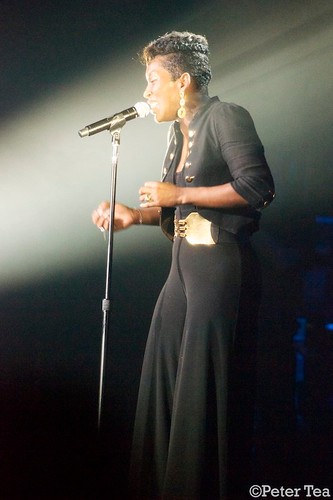
1. **Early Life and the Genesis of a Prodigy**Prince Rogers Nelson entered the world on June 7, 1958, in Minneapolis, born into a family already steeped in musicality. His mother, Mattie Della, was a jazz singer, and his father, John Lewis Nelson, was a pianist and songwriter. This vibrant, creative environment undoubtedly laid the groundwork for the extraordinary talent that would soon blossom. His very name, Prince, was inherited from his father’s popular stage name, Prince Rogers, which he used while performing with Mattie Della in a jazz group called the Prince Rogers Trio. It was a name that, despite his later preference for being called “Skipper” during childhood, seemed destined to herald royalty in the music world.
Indeed, the signs of his genius appeared early. At just seven years old, Prince wrote his first song, “Funk Machine,” on his father’s piano. While his parents’ divorce when he was ten led to a period of instability, with Prince repeatedly switching homes between his father and his mother and stepfather, music remained his constant. His stepfather, Hayward Baker, even took him to see James Brown in concert, an experience Prince credited with sparking his passion further. Later, after being thrown out by his father, he found refuge and a formative friendship with Andre Anderson (later André Cymone) in the Andersons’ basement, a bond that would prove instrumental in his early musical endeavors.
Beyond his prodigious musical aptitude, Prince’s early life revealed other facets of his developing character. He disclosed that he was “born epileptic” and experienced seizures as a child, an experience that added another layer to his personal story. His childhood was also surprisingly well-rounded; he attended Bryant Junior High, where he notably helped test the original *The Oregon Trail* video game, and Central High School, where he played football, basketball, and baseball. Furthermore, he received classical ballet training at the Minnesota Dance Theatre, a discipline that informed his iconic stage presence and later led him to become an advocate for dancers, using his wealth to support the Joffrey Ballet.
His dedication to his craft was evident from a young age. Meeting songwriter and producer Jimmy Jam in 1973, Prince impressed him not only with his musical talent and early mastery of a wide range of instruments but also with an unwavering work ethic. These foundational experiences, from his family’s musical heritage to his diverse interests and fierce commitment, coalesced to forge the nascent stages of an artist who would soon captivate the world.
Read more about: The Enduring Legacy of Ricky Martin: Charting a Course from Latin Pop Prodigy to Global Humanitarian Icon
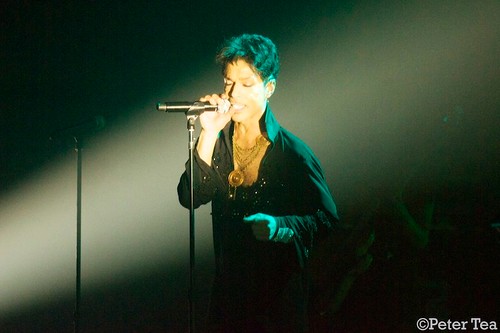
2. **Early Career: The Warner Bros. Deal and Debut Albums**The mid-1970s marked Prince’s entry into the professional music scene, a period of burgeoning talent and relentless effort to secure his place. In 1975, he contributed guitar tracks and co-wrote “Just Another Sucker” with Pepe Willie for the band 94 East, demonstrating his early collaborative spirit and instrumental prowess. Shortly after graduating from Central High School in 1976, Prince created a demo tape with producer Chris Moon, a critical step that, despite initially failing to secure a contract, ultimately led him to Minneapolis businessman Owen Husney.
Husney recognized the raw, undeniable talent and signed Prince, then just 19, to a management contract. Together, they crafted another demo at Sound 80 Studios, which, coupled with a meticulously produced press kit, sparked significant interest from major labels like Warner Bros. Records, A&M Records, and Columbia Records. This careful cultivation of his image and sound was crucial, culminating in Prince signing a landmark recording contract with Warner Bros. in 1977. This deal was exceptional, granting him an unprecedented level of creative control for three albums and retaining his publishing rights, a testament to his clear vision even at such a young age.
Prince’s debut album, *For You*, was recorded in Sausalito, California, and released on April 7, 1978. The album notes proudly declared that Prince wrote, produced, arranged, composed, and played all 27 instruments on the recording, with the exception of co-writing the lyrics for “Soft and Wet.” This was a remarkable feat for a debut artist, showcasing his multi-instrumental mastery and singular artistic control. The album quickly yielded early successes, with “Soft and Wet” reaching No. 12 on the Hot Soul Singles chart and No. 92 on the Billboard Hot 100, while “Just as Long as We’re Together” also charted on the Hot Soul Singles.
By 1979, Prince was ready to expand his live presence, forming a band that included André Cymone on bass and Bobby Z. on drums. Their inaugural show at the Capri Theater on January 5, 1979, was a pivotal moment, despite Warner Bros. executives suggesting more time for development. Later that year, the release of his self-titled second album, *Prince*, propelled him further into the spotlight, reaching No. 4 on the Billboard Top R&B/Black Albums charts and achieving platinum status. It delivered two significant R&B hits, “Why You Wanna Treat Me So Bad?” and “I Wanna Be Your Lover,” which sold over a million copies and secured Prince his first No. 1 on the Hot Soul Singles chart, signaling the true arrival of a star.
Read more about: 12 Famous People Who Used Social Media to Launch Their Career: How Viral Moments Led to Stardom
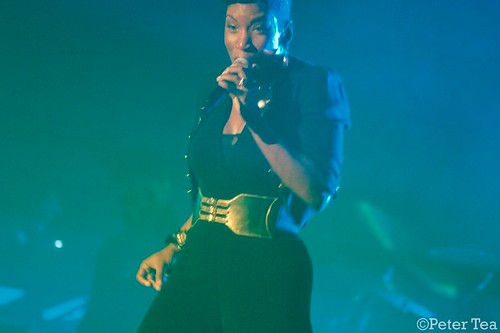
3. **Finding His Voice: *Dirty Mind*, *Controversy*, and *1999***The early 1980s saw Prince boldly embrace his provocative and genre-defying artistic identity, challenging norms and captivating audiences with his unfiltered vision. In 1980, he released *Dirty Mind*, an album that was nothing short of a sonic and lyrical revolution. It contained ually explicit material, notably the title track, “Head,” and “Sister,” pushing boundaries in a way that many artists dared not. Stephen Thomas Erlewine aptly described it as a “stunning, audacious amalgam of funk, new wave, R&B, and pop, fueled by grinningly salacious sex and the desire to shock.” Recorded in Prince’s own studio, the album was certified gold, and the single “Uptown” found success on both the Billboard Dance and Hot Soul Singles charts, proving that his daring approach resonated.
Prince’s growing presence was further cemented with his first appearance on *Saturday Night Live* in February 1981, performing “Partyup.” Later that year, the release of *Controversy* continued his streak of critical success. He embarked on several dates in support of the album, even opening for the Rolling Stones on their US tour. However, these performances weren’t without their dramatic moments. In Los Angeles, Prince, clad provocatively in a trench coat and black bikini briefs, was reportedly forced off stage after just three songs due to audience members throwing trash at him, highlighting the polarizing effect of his boundary-pushing persona. Nevertheless, he persevered, beginning 1982 with a successful headlining tour of college towns.
It was during this era that Prince’s unique linguistic style, characterized by abbreviated spellings like ‘U’ for you and ‘2’ for to, became a signature. This creative shorthand, which would later permeate his titles, liner notes, and web postings, mirrored his innovative approach to music. Beyond his solo work, Prince also fostered other talents, notably forming the side project band The Time in 1981. He often wrote and performed most of the instrumentation and backing vocals for their albums, sometimes under pseudonyms like “Jamie Starr,” showcasing his prolific creativity and desire to shape other artists’ sounds.
Culminating this period of intense creative output was the late 1982 release of the double album *1999*, a monumental work that sold more than four million copies. The title track, a potent protest against nuclear proliferation, became Prince’s first top 10 hit outside the US. Perhaps even more significantly, his song “Little Red Corvette” was one of the first two videos by black artists, alongside Michael Jackson’s “Billie Jean,” to be played in heavy rotation on MTV, a network previously criticized for its lack of “black music.” This breakthrough helped diversify the visual landscape of music television. With hits like “Delirious” also charting in the top ten, and “International Lover” earning him his first Grammy Award nomination, *1999* solidified Prince’s status as a formidable and groundbreaking artist, fiercely competitive with his peers, notably Michael Jackson, and increasingly influential across popular culture.
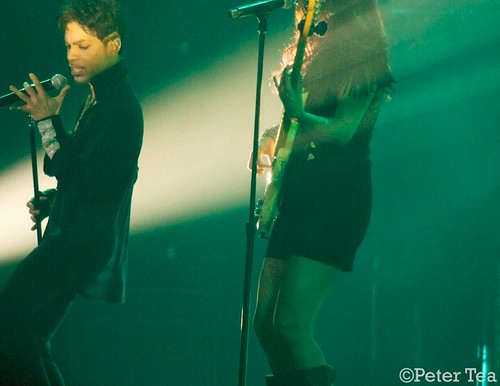
4. **The *Purple Rain* Era: A Global Phenomenon**The year 1984 marked an unparalleled zenith in Prince’s career, ushering in the *Purple Rain* era, a period of breathtaking creative and commercial triumph that transformed him into a global superstar. His band, then known as The Revolution—featuring Lisa Coleman and Doctor Fink on keyboards, Bobby Z. on drums, Brown Mark on bass, and initially Dez Dickerson, later replaced by Wendy Melvoin on guitar—had steadily evolved into a formidable unit. While initially used sparingly in the studio, their collaborative input gradually increased, creating a cohesive sound that was poised for greatness.
The genesis of *Purple Rain* extended beyond a mere album; it was envisioned as a major motion picture, a bold move championed by his former manager, Bob Cavallo. Despite Prince’s limited exposure to a broader audience at that point, his management secured the deal, leading to the creation of the loosely autobiographical film *Purple Rain*. Released in 1984, the film starred Prince himself and became an instant hit, grossing over $70 million worldwide and winning Prince an Academy Award for Best Original Song Score. It has since been regarded as one of the greatest musical films, a testament to its profound cultural impact.
The accompanying soundtrack album, also titled *Purple Rain*, was nothing short of a phenomenon. It spent an astonishing 24 consecutive weeks at No. 1 on the US Billboard 200 chart and sold over 13 million copies in the US alone. This album became a powerhouse of hits, with “When Doves Cry” and “Let’s Go Crazy” both reaching No. 1, and the iconic title track securing a No. 2 spot on the Billboard Hot 100. The album’s success was so immense that at one point in 1984, Prince simultaneously held the No. 1 album, single, and film in the US—a feat no other singer had achieved at that time. Its enduring critical acclaim is reflected in its ranking as 8th in Rolling Stone’s “500 Greatest Albums of All Time” and its inclusion on Time magazine’s All-Time 100 Albums list, further solidifying its legendary status.
Beyond the charts and accolades, *Purple Rain* cemented Prince’s cultural significance. Pop artist Andy Warhol, fascinated by Prince, created the iconic painting *Orange Prince* as part of a series of twelve unique portraits, recognizing the artist’s rise to the “height of his powers.” The album also sparked conversations beyond music, most notably when Tipper Gore founded the Parents Music Resource Center after her daughter listened to Prince’s ually explicit “Darling Nikki.” This led to the voluntary adoption of “Parental Advisory: Explicit Lyrics” labels on records, underscoring Prince’s capacity to provoke and influence societal discussions. The *Purple Rain* era was not just a commercial success; it was a cultural earthquake, forever altering the landscape of music, film, and popular discourse.
Read more about: Prince: The Unparalleled Genius Who Reshaped Music, Culture, and His Own Destiny

5. **Post-*Purple Rain* Evolution: *Around the World in a Day* and *Parade***Following the unprecedented success of *Purple Rain*, Prince embarked on a period of artistic reinvention and exploration, signaling a shift in direction that both intrigued and challenged his audience. In 1985, he made a surprising announcement: he would discontinue live performances and music videos after the release of his next album. This declaration hinted at an artist constantly seeking new modes of expression and refusing to rest on the laurels of his recent triumphs. His subsequent recording, *Around the World in a Day*, released that same year, continued his chart dominance, holding the No. 1 spot on the Billboard 200 for three weeks, proving his continued ability to captivate. The album yielded popular singles like “Raspberry Beret,” which reached No. 2 on the Billboard Hot 100, and “Pop Life,” charting at No. 7, demonstrating his consistent hit-making power even with evolving sounds.
The artistic journey continued in 1986 with the album *Parade*, which also served as the soundtrack for Prince’s second film, *Under the Cherry Moon*. The album reached No. 3 on the Billboard 200 and No. 2 on the R&B charts, showcasing his versatility across genres. “Kiss,” the album’s first single, choreographed by Louis Falco, became another No. 1 hit on the Billboard Hot 100. Interestingly, the song was originally written for a side project called Mazarati, illustrating Prince’s prolific songwriting and willingness to share his compositions with other artists. That same year, he penned “Manic Monday,” a track recorded by The Bangles, which climbed to No. 2 on the Hot 100 chart, further highlighting his genius as a songwriter for others.
While *Parade* went platinum and sold two million copies, the film *Under the Cherry Moon* faced a different reception. Directed by and starring Prince alongside Kristin Scott Thomas, the movie unfortunately received critical backlash, earning Golden Raspberry Awards for Worst Picture, Worst Director, Worst Actor, and Worst Original Song for “Love or Money.” This experience underscored the challenges of translating his unique artistic vision across different mediums. However, with the passage of time, some critics re-evaluated *Under the Cherry Moon* after Prince’s death, declaring it a cult classic and drawing comparisons to revered films like *8½* and *Casablanca*, revealing a deeper appreciation for its unconventional style.
Following the *Parade* tour, known as the Hit n Run – Parade Tour, Prince made a significant decision that marked the end of an era: he disbanded The Revolution, a band that had been integral to his most iconic successes. This move included the dismissal of Wendy & Lisa, and Brown Mark also departed, while keyboardist Doctor Fink remained. Prince immediately began recruiting new members, including Miko Weaver on guitar, Atlanta Bliss on trumpet, and Eric Leeds on saxophone, signaling his constant desire for change and new collaborative energies, always pushing forward and never looking back.
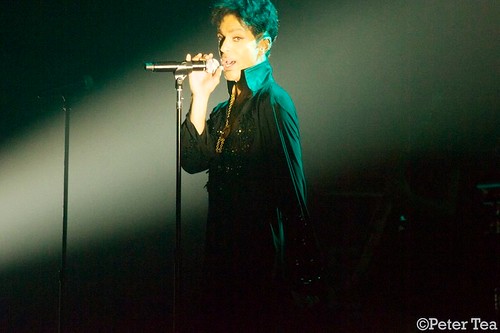
6. **The Masterpiece: *Sign o’ the Times***Even amidst significant band changes, Prince’s creative engine never stalled; in fact, it seemed to accelerate, leading to what many critics consider the greatest work of his career: *Sign o’ the Times*. Prior to disbanding The Revolution, Prince had been immersed in two distinct projects: *Dream Factory*, a Revolution album featuring input and lead vocals from band members like Wendy & Lisa, and *Camille*, a solo endeavor where he experimented with a new, androgynous persona, primarily singing in a sped-up, female-sounding voice. This duality showcased his boundless experimental spirit and diverse artistic impulses.
With The Revolution officially dismissed, Prince masterfully consolidated material from both shelved albums, enriching them with new songs, into what he envisioned as a sprawling three-LP album titled *Crystal Ball*. However, his record label, Warner Bros., exercised its commercial prerogative and compelled Prince to trim the ambitious triple album down to a double album. The result, *Sign o’ the Times*, was released on March 31, 1987, and despite the label’s intervention, it emerged as a critically acclaimed masterpiece, showcasing an artist at the peak of his powers, wrestling with complex social and personal themes.
The album performed strongly on the charts, peaking at No. 6 on the Billboard 200 albums chart. It also spawned a series of impactful singles that demonstrated its breadth and appeal. The title track, “Sign o’ the Times,” a poignant commentary on contemporary issues, charted at No. 3 on the Hot 100. “If I Was Your Girlfriend,” a deeply personal and unconventional track, reached No. 12 on the R&B chart. The infectious duet with Sheena Easton, “U Got the Look,” soared to No. 2 on the Hot 100, and the reflective “I Could Never Take the Place of Your Man” finished at No. 10 on the Hot 100, further cementing the album’s commercial success.
Critically, *Sign o’ the Times* was universally lauded, named the top album of the year by the prestigious Pazz & Jop critics’ poll and selling an impressive 3.2 million copies. Its success extended globally, particularly in Europe, where Prince embarked on a lengthy and successful tour to promote the album. He assembled a new backing band from the remnants of The Revolution, adding bassist Levi Seacer Jr., keyboardist Boni Boyer, and dancer/choreographer Cat Glover, alongside new drummer Sheila E and holdovers. Although Warner Bros. wanted to bring the successful European tour to the US, Prince, eager to move onto new musical ventures, compromised by filming the last two nights, resulting in the *Sign o’ the Times* film. While its box-office receipts were minimal, the film garnered better reviews than *Under the Cherry Moon*, further solidifying the album’s place in his legendary discography.
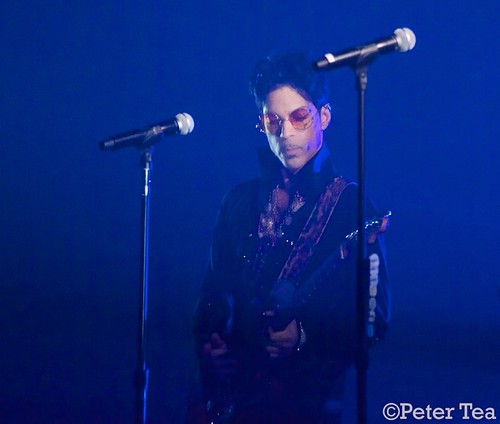
7. **Artistic Duality: The *Black Album* and *Lovey***Prince’s creative output continued to be characterized by intense productivity and often conflicting artistic impulses, nowhere more evident than in the contrasting releases (or non-release) of *The Black Album* and *Lovey*. The intended follow-up to *Sign o’ the Times* was *The Black Album*, a project that leaned heavily into instrumental tracks, funk, and R&B, while also seeing Prince experiment with the burgeoning sounds of hip hop on songs like “Bob George” and “Dead on It.” This album was designed to be stark and minimalist, with a monochromatic black cover bearing only the catalog number, embodying a raw, unadorned musical statement.
However, in a move that became emblematic of his complex relationship with his art and his spiritual beliefs, Prince had an extraordinary change of heart just as 500,000 copies of *The Black Album* had been pressed. He experienced a profound “spiritual epiphany” that led him to believe the album was evil, and in an unprecedented decision, he had it recalled. This dramatic act underscored his personal connection to his music and his willingness to sacrifice commercial gain for his convictions. Years later, in 1994, Warner Bros. would release it as a limited edition, allowing the legendary, once-shelved album to finally reach a wider audience and become a highly sought-after collector’s item.
Following the dramatic recall, Prince immediately returned to the studio, recording *Lovey* in a remarkably swift eight weeks. Released on May 10, 1988, *Lovesexy* served as a spiritual and thematic opposite to the dark, introspective *The Black Album*. It was a vibrant, optimistic declaration, with every song largely a solo effort by Prince, save for “Eye No,” which featured his backing band. The album’s message was one of positivity and love, reflecting a distinct shift in his artistic and personal focus, and it resonated with fans, reaching No. 11 on the Billboard 200 and No. 5 on the R&B albums chart.
The lead single from *Lovey*, “Alphabet St.,” became a substantial hit, peaking at No. 8 on the Hot 100 and No. 3 on the R&B chart, selling 750,000 copies. To support the album, Prince embarked on the expansive Lovesexy World Tour, a three-leg, 84-show spectacle that featured his post-Revolution backing band. While the shows were met with enthusiastic crowds and well-received, their elaborate and expensive sets and props meant that, despite their popularity, the tour ultimately failed to make a net profit, a common challenge for an artist as committed to grand artistic visions as Prince was. This period perfectly encapsulated Prince’s relentless pursuit of artistic integrity, even when it meant navigating complex spiritual revelations and financial realities, always prioritizing his creative truth.
Prince’s artistic journey was one of constant evolution, marked by audacious creative choices and an unyielding battle for artistic autonomy. Having explored the foundational years and breakthrough moments of this singular talent, we now turn our attention to the next chapter of his remarkable story, where he continued to push boundaries, redefine his image, and cement an enduring legacy that reverberates through music to this day. His commitment to his craft, and his readiness to venture into new territories, always kept the world guessing, but never disappointed those who sought true innovation in music.
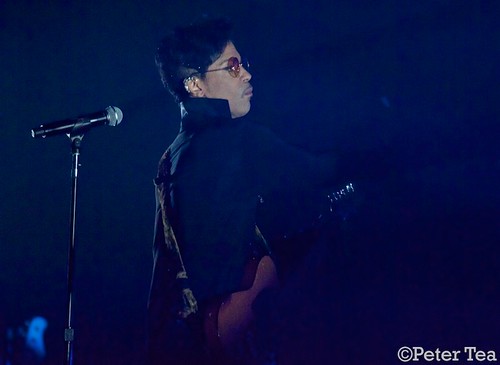
8. **Film Soundtracks and Expanding Horizons**The late 1980s saw Prince expand his creative universe beyond traditional album releases, venturing significantly into film soundtracks and notable collaborations. In 1989, he lent his unparalleled talent to Madonna’s *Like a Prayer* album, co-writing and singing the duet “Love Song” and contributing uncredited electric guitar work on several other tracks, showcasing his versatility and willingness to collaborate with other icons of the era. These contributions underscored his influence and respect within the industry, proving his ability to seamlessly integrate his unique sound into varied artistic contexts.
This period was perhaps most defined by his involvement with director Tim Burton’s *Batman* (1989) film. Asked by Burton to record several songs for the live-action adaptation, Prince immersed himself in the project, ultimately producing an entire nine-track album that Warner Bros. released on June 20, 1989. The album was an immediate smash, soaring to No. 1 on the Billboard 200 and selling an impressive 4.3 million copies, further solidifying his commercial prowess in new domains.
The *Batman* soundtrack also spawned major hits, most notably “Batdance,” which topped both the Billboard Hot 100 and R&B charts, a testament to Prince’s ability to craft infectious, chart-topping anthems. Other singles like “The Arms of Orion,” a duet with Sheena Easton, and “Partyman,” featuring his then-girlfriend Anna Fantastic, also performed strongly, showcasing the album’s diverse appeal. However, this success came with a significant caveat: as part of the deal, Prince had to sign away all publishing rights to the songs on the album to Warner Bros., a detail that would foreshadow future contractual disputes.
Following this whirlwind of soundtrack success, Prince embarked on his “Nude Tour” in 1990, a back-to-basics approach with a revamped band featuring new members like keyboardist Rosie Gaines, drummer Michael Bland, and the dancing trio the Game Boyz. This European and Japanese tour, focusing on a greatest hits setlist, proved to be a financial triumph. Later that year, Prince finished production on his fourth film, *Graffiti Bridge* (1990), a project Warner Bros. reluctantly greenlit after Prince assured them it would be a sequel to *Purple Rain* and involved original members of The Time. The accompanying album reached No. 6 on both the Billboard 200 and R&B charts, with “Thieves in the Temple” hitting No. 1 on the R&B chart. Unfortunately, the film itself grossed a mere $4.2 million, proving to be a box-office flop and marking the departure of remaining Revolution members Miko Weaver and Doctor Fink, signaling a complete shift towards a new era.
Read more about: Miley Cyrus: Decoding the Journey – From Disney Star to Global Icon and Her Evolving Relationship with Show Business
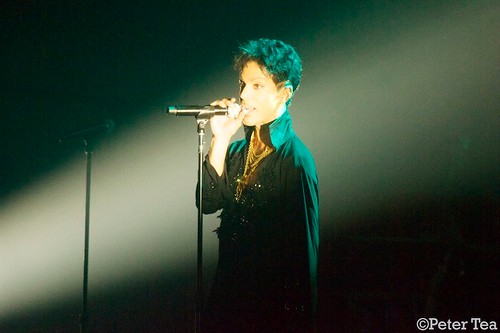
9. **The New Power Generation and the Road to Autonomy**The dawn of the 1990s heralded a significant transition in Prince’s musical ensemble, as he unveiled his new backing band, the New Power Generation. This fresh lineup, featuring bassist Sonny T., keyboardist Tommy Barbarella, the brass section known as the Hornheads, Levi Seacer Jr. on guitar, Rosie Gaines, Michael Bland, and the Game Boyz, debuted at Rock in Rio II in 1991. Their collective energy and input would infuse Prince’s sound with a renewed vitality, marking a distinct new phase in his career.
With substantial collaboration from his new band members, Prince released *Diamonds and Pearls* on October 1, 1991. This album proved to be a resounding success, reaching No. 3 on the Billboard 200 chart and spawning four hit singles in the United States. Tracks like “Gett Off” and “Cream” climbed the charts, with “Cream” notably becoming Prince’s fifth US No. 1 single. The title track, “Diamonds and Pearls,” also soared to No. 3 on the Hot 100 and topped the R&B charts, further cementing the album’s commercial appeal and selling over 2 million copies in the US alone.
In 1992, buoyed by the immense success of *Diamonds and Pearls*, Prince renewed his contract with Warner Bros., reportedly securing a staggering $100 million deal for the release of six more albums. This seemingly lucrative agreement, however, would soon become the focal point of a contentious battle over creative control. Later that year, Prince released his 14th studio album, the second to feature the New Power Generation, which bore only an unpronounceable symbol on its cover, a combination of the male and female symbols.
This album, later referred to as the *Love Symbol Album*, was preceded by the singles “Sexy MF” and “My Name Is Prince,” with “7” peaking at No. 7 on the Billboard Hot 100. Despite its innovative presentation and catchy singles, the album peaked at No. 5 on the Billboard 200 and sold 2.8 million copies worldwide, a respectable figure but one that, perhaps in the wake of the previous album’s success and the monumental contract, fell short of the lofty expectations set by the label, hinting at underlying tensions.
Read more about: Automotive Icons Unraveled: The Definitive Account of 15 Star Brands and Models That Fell From Grace
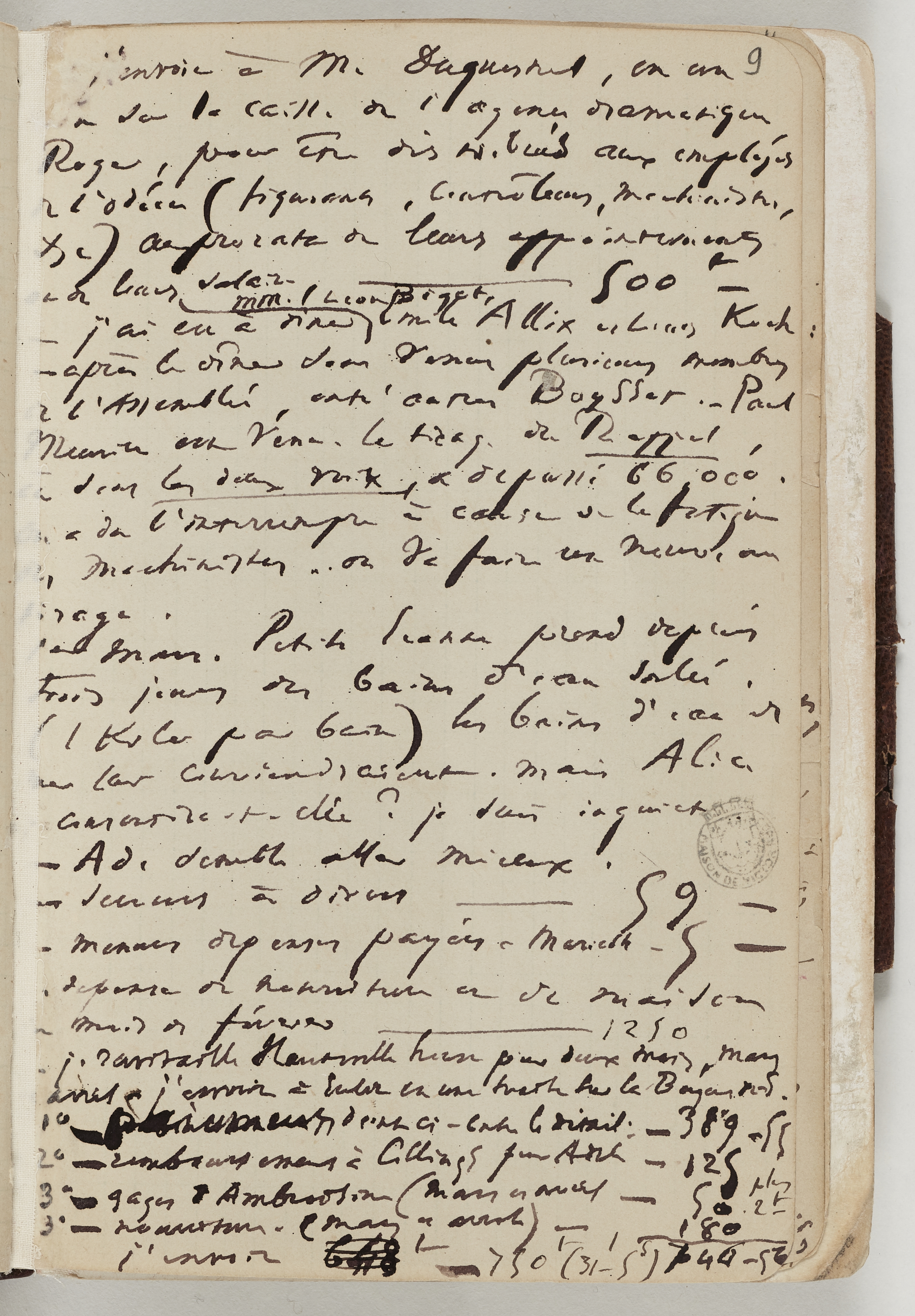
10. **The Audacious Name Change and Battle for Creative Freedom**The mid-1990s witnessed Prince embark on an unprecedented act of artistic rebellion, a direct consequence of his escalating frustrations with Warner Bros. In 1993, tired of the label’s refusal to release his enormous backlog of music at his desired pace, Prince formally adopted the unpronounceable “Love Symbol” as his stage name. This bold move was a profound statement of independence, signaling his determination to reclaim ownership over his creative output, even if it meant sacrificing his globally recognized identity.
To enable the use of this symbol in print media, Warner Bros. had to resort to an unconventional solution, organizing a mass mailing of floppy disks containing a custom font. During this period, Prince was frequently referred to by the media and fans as “the Artist Formerly Known as Prince” or simply “the Artist,” underscoring the revolutionary nature of his protest. This drastic step highlighted his unwavering commitment to artistic integrity, even in the face of immense commercial pressures and logistical challenges.
That same year, Warner Bros. released a comprehensive greatest hits compilation titled *The Hits/The B-Sides*, a three-disc set designed to capitalize on his enduring popularity. The collection featured the majority of Prince’s hit singles, along with several previously hard-to-find B-sides and unreleased tracks, such as the Revolution-recorded “Power Fantastic” and a live recording of “Nothing Compares 2 U” with Rosie Gaines. Two new songs, “Pink Cashmere” and “Peach,” were chosen as promotional singles, offering fans a glimpse of his continued prolificacy amidst his name change.
In a move to further assert his independence, Prince allowed the single “The Most Beautiful Girl in the World” to be released in 1994 through a small, independent distributor, Bellmark Records. This decision proved highly successful, with the song reaching No. 3 on the US Billboard Hot 100 and soaring to No. 1 in many other countries, demonstrating his continued ability to create global hits outside the traditional label machinery. As a strategic means of releasing himself from his contractual obligations, Prince began to release albums in quick succession, leading to the previously aborted *The Black Album* finally receiving a limited official release seven years after its initial recording. He fiercely advocated for the simultaneous release of his next two albums, *Come* and *The Gold Experience*, but Warner Bros. delayed *The Gold Experience*, citing fears of market saturation. In a powerful act of defiance, Prince began making public appearances with the word “slave” written on his face, a poignant protest against what he perceived as creative servitude. *The Gold Experience* was eventually released in September 1995, and though it faced a period out of print due to a plagiarism case, it was reissued on streaming in 2018 and on physical formats in 2022. By 1996, with the release of *Chaos and Disorder* and *The Vault: Old Friends 4 Sale*, Prince had delivered the promised number of albums, and Warner Bros. finally agreed to release him from his contract, marking the end of an often tumultuous, but incredibly fruitful, partnership.
Read more about: OMG, Remember Them?! These 15 Pop Stars Were Our Ultimate Summer & Music Video Heartthrobs!
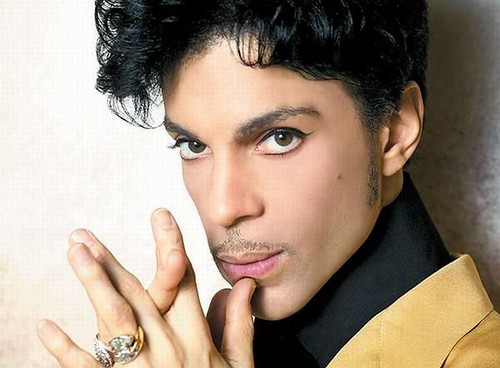
11. **An Enduring Legacy and Posthumous Recognition**The world was profoundly shaken by the unexpected passing of Prince Rogers Nelson on April 21, 2016, at the age of 57. His death, caused by an accidental overdose of fentanyl at his Paisley Park home and recording studio, left an immeasurable void in the music industry, but his legacy continues to inspire generations of artists and fans. Throughout his lifetime, Prince was an extraordinarily prolific musician, releasing an astonishing 39 albums during his career, a testament to his boundless creative energy.
Beyond his released works, Prince left behind a vast and legendary trove of unreleased material, meticulously stored in a custom-built bank vault beneath his Paisley Park home. This hidden treasure included fully completed albums and over 50 finished music videos, hinting at the sheer volume of his artistic output that the world had yet to hear or see. In the years since his passing, numerous posthumous collections of his previously unheard work have been carefully issued by his estate, continuing to unveil new facets of his genius and ensuring his musical journey endures.
Prince’s impact on music and culture is truly immeasurable, reflected in his staggering sales of over 100 million records worldwide, cementing his place among the best-selling music artists of all time. His career was adorned with a multitude of prestigious awards, including the Grammy President’s Merit Award, the American Music Awards for Achievement and of Merit, the Billboard Icon Award, an Academy Award for *Purple Rain*, and a Golden Globe Award, each a testament to his groundbreaking artistry.
His profound influence has been recognized through numerous inductions into hallowed halls of fame: the Rock and Roll Hall of Fame in 2004, the UK Music Hall of Fame in 2006, and the Rhythm and Blues Music Hall of Fame in 2016. In 2022, he received the unique distinction of being inducted twice into the Black Music & Entertainment Walk of Fame, underscoring the breadth of his cultural significance. Estimates of the complete number of songs written by Prince range widely, from 500 to well over 1,000, illustrating the incredible depth and scope of his songwriting prowess.
Read more about: John Amos: Celebrating the Enduring Legacy of a Groundbreaking Actor and Cultural Icon
Prince’s artistic journey was a relentless pursuit of innovation, a vibrant tapestry woven from diverse genres, flamboyant self-expression, and an unwavering commitment to his own truth. He was a force of nature, a musical polymath who dared to be different, and whose pioneering spirit continues to resonate. His tender touch on the world of music, through his guiding hand of genius, ensures that his partnership with art, and his enduring legacy, will continue to move and inspire for centuries to come.

